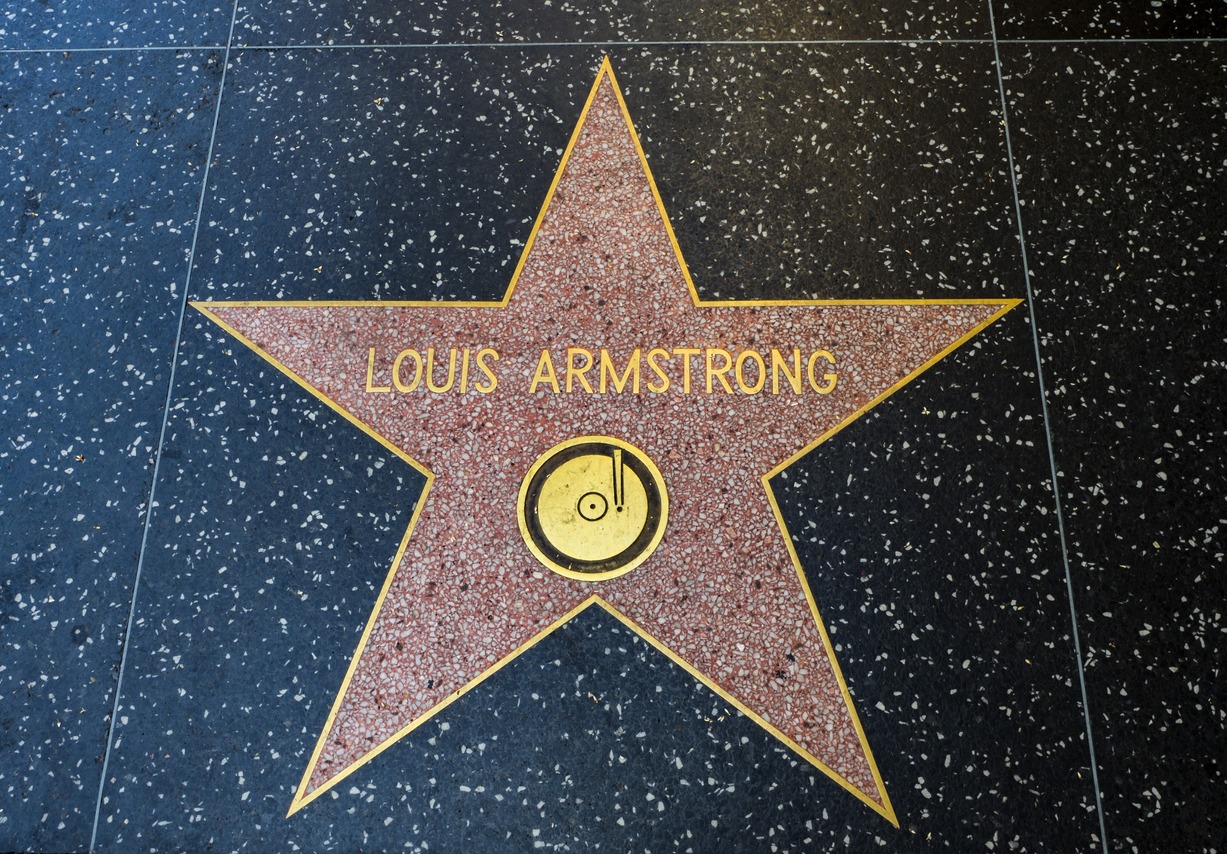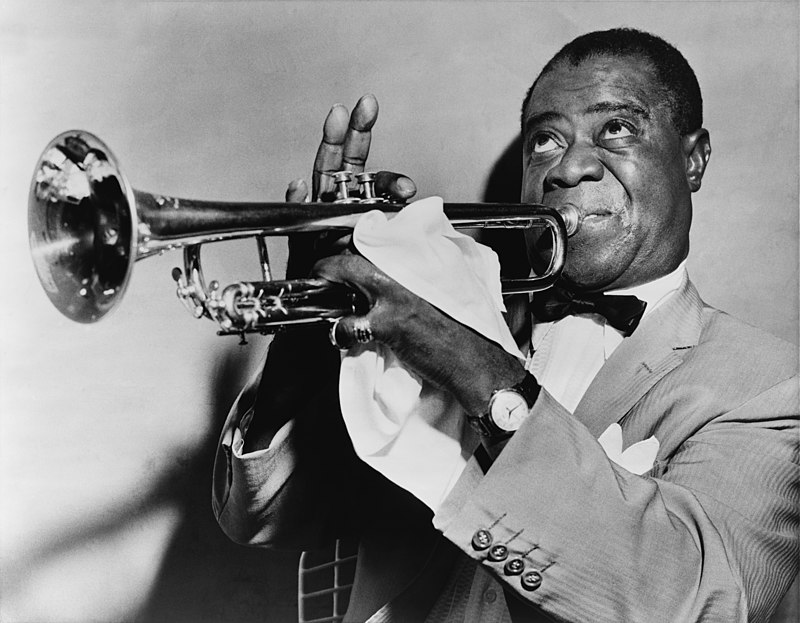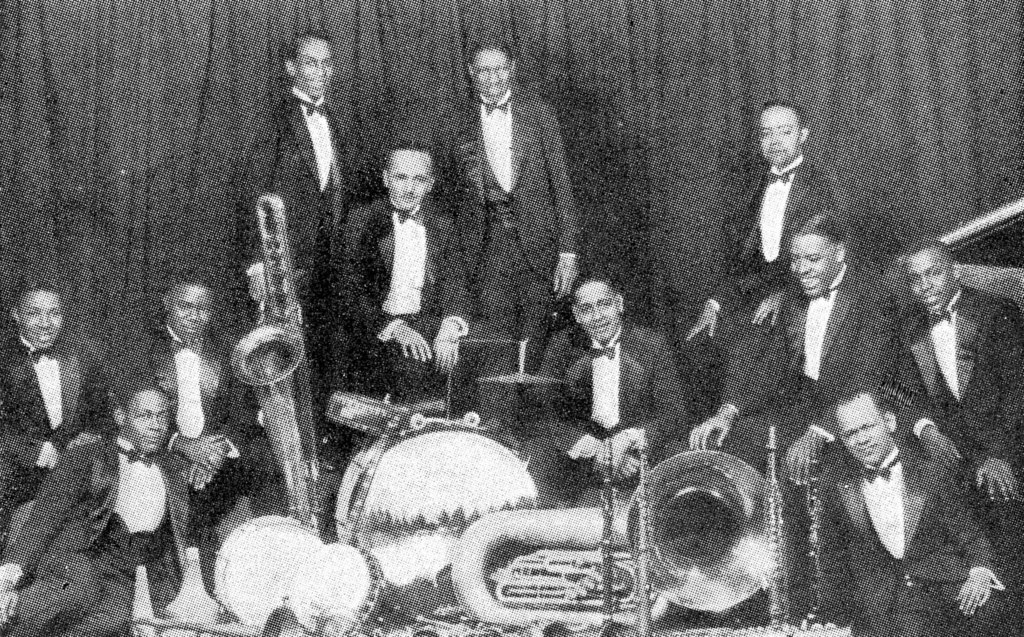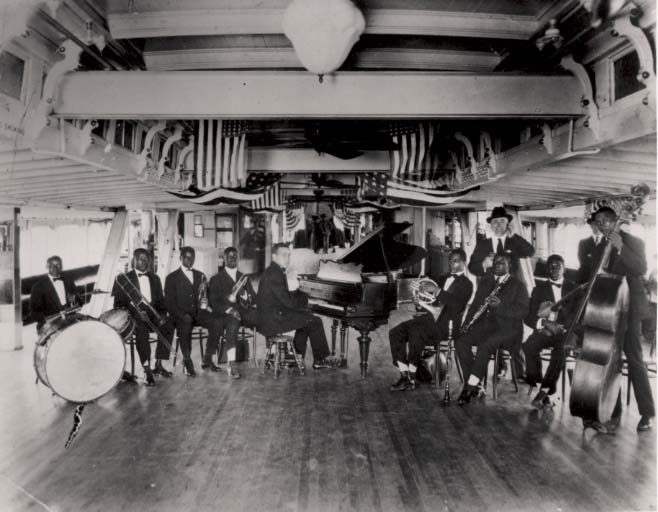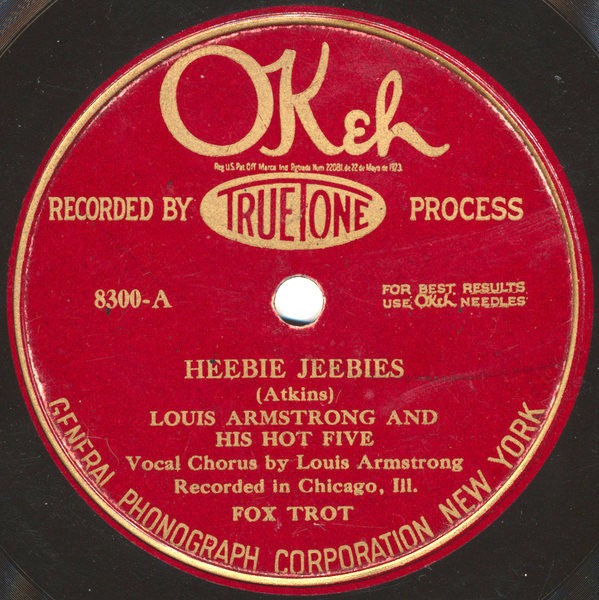Queens, one of New York City’s most diverse boroughs, is home to a treasure trove of cultural landmarks and hidden gems. Among these, the Louis Armstrong House Museum stands out as a testament to the legacy of one of America’s greatest jazz musicians. In this article, we invite you to explore the wonders of Louis Armstrong’s House Museum in Queens.
A Musical Legend’s Home
Located in the heart of Corona, Queens, the Louis Armstrong House Museum is far more than a mere collection of artifacts and memorabilia. It is a living, breathing tribute to one of the greatest musical legends of all time, Louis Armstrong, fondly known as “Satchmo.” This museum is unique in that it is set in the very home where Armstrong and his wife, Lucille, resided from 1943 until his passing in 1971, offering an intimate glimpse into the personal life of the jazz icon. The museum’s location in Armstrong’s actual home adds an unparalleled layer of authenticity and emotional resonance to the visitor experience. As you walk through the rooms, it’s as if the walls themselves echo with the remnants of Armstrong’s vibrant life and legacy. Each corner of the house, each piece of furniture, and every artifact tells a story, providing insights into both the public persona and the private individual behind the legend.
The house, preserved almost exactly as it was during Armstrong’s time, allows visitors to step back into the mid-20th century and experience the world as Armstrong did. The decor, personal belongings, and even the colors of the walls reflect the tastes and times of Armstrong and Lucille, providing a tangible connection to their everyday lives. Visitors can explore Armstrong’s personal study, his music room, and even the kitchen, each space offering a unique perspective on his life and times. Moreover, the museum houses an extensive collection of Armstrong’s personal effects, including his trumpets, handwritten music sheets, recordings, and personal letters. These items are not just historical artifacts; they represent the milestones and moments of Armstrong’s journey as a musician, a cultural icon, and a man. They provide an intimate look into his creative process, influences, and impact on the world of music and beyond.
Educational programs and guided tours at the Louis Armstrong House Museum further enrich the experience. These programs delve into the various facets of Armstrong’s life, including his groundbreaking contributions to jazz, his role in the civil rights movement, and his influence on global culture. The museum is not just a place to learn about Armstrong’s musical achievements; it’s a place to understand the man behind the music and the context in which he lived and created. The Louis Armstrong House Museum stands as a testament to the enduring legacy of one of the most influential figures in the history of jazz. It’s a time capsule that captures the essence of a musical legend, offering visitors a rare and intimate journey into the life and times of Louis Armstrong. For fans, historians, and music enthusiasts alike, a visit to this museum is a pilgrimage to the heart of jazz history.
A Peek into Satchmo’s Life
Louis Armstrong, affectionately known around the world as “Satchmo,” is not just a name in the annals of music history; he is a symbol of musical genius and cultural transformation. His journey from the streets of New Orleans to the pinnacle of international fame is a story of talent, perseverance, and innovation that reshaped the world of music. Born in the cradle of jazz, New Orleans, in 1901, Armstrong’s early life was steeped in hardship. Despite the challenges of his modest upbringing, his innate musical talent and unwavering determination propelled him to the forefront of the jazz scene. Armstrong’s trumpet playing was not just technically proficient; it was revolutionary. He introduced an unprecedented virtuosity and expressiveness, transforming the trumpet into a lead instrument in jazz bands.
With its distinctive, gravelly timbre, Armstrong’s voice became as iconic as his trumpet playing. His vocal style added a new dimension to jazz music, infusing it with a unique blend of warmth, soul, and humor. Songs like “What a Wonderful World” and “Hello, Dolly!” are memorable not just for their melodies but also for the emotional depth and humanity Armstrong brought to them. Beyond his artistic achievements, Armstrong’s career was marked by a relentless drive to break barriers. He emerged as a significant figure during a time when the United States was deeply segregated, and he navigated these societal challenges with grace and resilience. His music broke racial boundaries, appealing to audiences across the spectrum, and he used his influence to advocate for the civil rights of African Americans.
Armstrong’s impact on jazz extends to the very essence of the genre. He popularized improvisation, a hallmark of jazz, and pushed the boundaries of what was considered possible in music. His approach to rhythm, melody, and solo performance laid the groundwork for future generations of jazz musicians. Furthermore, Armstrong’s cultural significance was global. During the Cold War, he became an unofficial ambassador of American culture, using his music to bridge political and cultural divides. His tours around the world not only spread the joy of jazz but also demonstrated the power of music as a unifying force.
Louis “Satchmo” Armstrong was more than a musician; he was a cultural icon who left an indelible mark on the world. His life and work symbolize the power of music to transcend barriers, inspire change, and bring joy to people of all backgrounds. The Louis Armstrong House Museum not only preserves the legacy of this remarkable man but also serves as a reminder of the enduring impact one individual can have on the world.
The Legacy of Jazz
Louis Armstrong’s legacy in the realm of jazz is monumental, a testament to a man who not only mastered his craft but also revolutionized an entire genre. His impact on jazz is celebrated and explored in depth at the Louis Armstrong House Museum, where visitors are invited to immerse themselves in the world of a true musical pioneer. The museum offers a unique opportunity to experience Armstrong’s artistry up close. Through his iconic recordings, visitors can witness the evolution of his musical style over the decades. Each record, each track serves as a chapter in the story of jazz, illustrating how Armstrong’s influence permeated the genre. His recordings are not just music; they are historical documents that capture the essence of an era.
In addition to audio recordings, the museum also showcases rare footage of Armstrong’s performances. These visual artifacts offer a glimpse into his charismatic stage presence, allowing visitors to see firsthand the energy and passion that Armstrong brought to every performance. Watching Armstrong in action, one can’t help but be captivated by his infectious smile and the sheer joy he exuded when playing. Armstrong’s influence on jazz extends beyond his technical mastery and innovations. He was instrumental in popularizing jazz across the globe, making it not just an American art form but an international phenomenon. His music broke racial and cultural barriers, introducing diverse audiences to the sounds of jazz.
Moreover, Armstrong’s approach to music laid the groundwork for future generations of jazz musicians. He inspired countless artists with his creativity, resilience, and dedication to his craft. The techniques he developed, the styles he popularized, and the artistic risks he took have shaped the course of jazz for decades. The Louis Armstrong House Museum does more than just celebrate a musician; it honors the legacy of a man who was a cornerstone of jazz music. Through its exhibits, the museum provides a deeper understanding and appreciation of Armstrong’s contributions to the art form. It’s a place where the spirit of jazz is kept alive, inspiring new generations to discover and appreciate the rich heritage of this uniquely American genre.
The Gardens and Lucille’s Influence
The Louis Armstrong House Museum extends its narrative beyond the walls of the house into the enchanting gardens, a testament to Lucille Armstrong’s influence and her love for gardening. These gardens are not just an extension of the house; they are a living part of the Armstrong legacy, reflecting the care and attention Lucille devoted to creating a tranquil haven for herself and Louis. Lucille Armstrong played a pivotal role not only in Louis’s life but also in the preservation of their shared legacy. Her foresight in maintaining their home as a historical site has allowed generations to experience the world of Louis Armstrong intimately. The gardens, designed and nurtured by Lucille, are a physical manifestation of her love and dedication. They provide a serene backdrop to the house, where visitors can stroll, reflect, and immerse themselves in the quiet beauty surrounding Armstrong’s world.
The landscaping of the gardens reveals Lucille’s meticulous attention to detail and her passion for gardening. Every plant, every pathway, and every arrangement speaks to her personal touch and aesthetic sensibility. The lush greenery and blooming flowers create an atmosphere of peace and beauty, offering a stark contrast to the bustling city life just beyond the museum’s boundaries. Visiting the gardens, one can sense the personal connection and love that Lucille poured into this space. It’s easy to imagine Louis and Lucille spending quiet moments here, away from the demands of his career, enjoying the simple pleasures of nature and each other’s company. The gardens serve as a reminder of their life together, away from the spotlight, where they found solace and joy in the everyday.
Furthermore, the gardens add an extra layer of charm and intimacy to the museum experience. They offer a glimpse into the personal tastes and lifestyle of the Armstrongs, providing a fuller picture of their life at home. For visitors, the gardens are a space to pause and absorb the essence of the Armstrongs’ life, a peaceful retreat that complements the rich history housed within the museum. In essence, the gardens at the Louis Armstrong House Museum are a beautiful tribute to Lucille Armstrong’s role in Louis’s life and legacy. They encapsulate her dedication to preserving their home as a space of beauty and tranquility, and her influence in ensuring that the legacy of Louis Armstrong would continue to inspire and enchant visitors from around the world.
Educational Programs and Events
The museum’s array of educational programs, workshops, and events are thoughtfully designed to offer visitors of all ages a deeper, more interactive understanding of Louis Armstrong’s life, his work, and his profound impact on jazz and cultural history. One of the most exciting aspects of the museum’s offerings is its live jazz performances. These events are more than just concerts; they are immersive experiences that transport audiences back to the golden age of jazz, capturing the spirit and vibrancy of Armstrong’s era. Attending these performances, visitors have the opportunity to experience firsthand the magic of jazz music, resonating through the same spaces where Armstrong himself once lived and played.
For those keen on learning and participation, the museum organizes music workshops that cater to a wide range of interests and skill levels. These workshops offer a hands-on approach to music education, drawing on Armstrong’s legacy and techniques. Participants can learn about jazz history, improvisation, and Armstrong’s unique style, gaining practical skills and a deeper appreciation for the art form. Moreover, the museum’s archives are a treasure trove for researchers, historians, and enthusiasts. With a vast collection of recordings, photographs, personal letters, and manuscripts, the archives offer a comprehensive look into Armstrong’s life and career. Exploring these materials, visitors can delve into the minutiae of Armstrong’s world, gaining insights into his creative process, personal thoughts, and the historical context in which he lived. Educational events and programs at the museum are also tailored to engage younger audiences, sparking an interest in jazz among the next generation. Through interactive tours, storytelling sessions, and educational activities, children are introduced to Armstrong’s music and legacy in an engaging and accessible manner.
The Louis Armstrong House Museum also serves as a community hub, hosting various cultural events that celebrate Armstrong’s legacy and the broader cultural heritage of jazz and its role in American history. These events often bring together musicians, scholars, and fans, creating a vibrant community space where Armstrong’s spirit continues to thrive. Hence, the educational programs and events at the Louis Armstrong House Museum are integral to its mission. They ensure that the museum is not just a place to observe history, but a dynamic space where the legacy of Louis Armstrong is actively celebrated, learned about, and experienced. Through these programs, the museum continues to spread Armstrong’s joyous and transformative approach to music, keeping his spirit alive for future generations.
Preserving a Cultural Icon
The mission of the Louis Armstrong House Museum is a multifaceted endeavor that extends well beyond the mere display of memorabilia and artifacts. At its core, the museum is steadfastly committed to preserving, interpreting, and promoting the immense cultural legacy of Louis Armstrong. It stands as a guardian of history, ensuring that the profound impact of “Satchmo” on music, culture, and society continues to be recognized and celebrated by future generations.
Central to the museum’s mission is its dedication to rigorous research. The institution is a keeper of Armstrong’s physical legacy and an active research center. Scholars, musicians, and historians collaborate to delve deeper into Armstrong’s life, exploring his music, personal correspondence, and the broader historical context of his era. This research is vital in constructing a comprehensive and nuanced portrait of Armstrong, shedding light on both his public persona and private life.
Exhibitions at the museum play a crucial role in bringing Armstrong’s legacy to life. These are thoughtfully curated to showcase different aspects of his career and influence. From highlighting his groundbreaking musical innovations to exploring his role in the civil rights movement, the exhibitions offer visitors a multifaceted understanding of Armstrong’s contributions. These displays are not static; they are dynamic and evolving, reflecting ongoing research and discoveries about Armstrong’s life and legacy.
Community outreach is another cornerstone of the museum’s mission. Recognizing Armstrong’s influence transcends music, the museum engages with the local community and beyond. Through educational programs, workshops, and cultural events, the museum reaches out to diverse audiences, fostering an appreciation for jazz and its historical significance. These outreach efforts ensure that Armstrong’s legacy remains relevant and accessible to all, regardless of age or background.
The museum also plays a crucial role in inspiring future generations. By offering educational resources, hosting student tours, and organizing interactive events, it ignites a passion for jazz and cultural history among young people. These initiatives are vital in keeping Armstrong’s spirit alive, ensuring that his contributions continue to resonate in the hearts and minds of the youth.
Conclusion
The Louis Armstrong House Museum in Queens is not just a place to learn about jazz history; it’s a living tribute to a musical legend. It allows you to step into the world of Louis Armstrong, to feel his passion for music, and to appreciate his impact on American culture. It’s a must-visit for music enthusiasts, history buffs, and anyone looking to connect with the spirit of jazz. As you explore the wonders of this unique museum, you’ll gain a deeper appreciation for the enduring legacy of Satchmo and the vibrant cultural heritage of Queens, New York.

